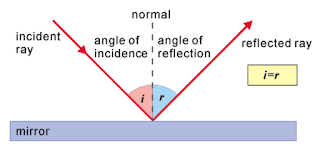AXES AND ANGLES OF EYEBALL
Optical Axis
A line passing through centre of cornea, centre of lens and posterior pole of retina is the optical axis of eyeball. (ONA)
Visual Axis
A line joining point of taxation with phobia and passing through nodal point of eyeball is called visual axis. Nodal point of eyeball is just anterior to posterior capsule of lens. Fixation point is the point which is being seen with phobia at any particular moment. (VNF)
Pupillary Axis
This is a straight line that passes through centre of pupil. (OPA)
Fixation Axis
This is a straight line that joins centre of rotation of eyeball with fixation point. (VC)
-------------------------------------------------------------------------------
ANGLES -
1. Angle Alpha -
Is the angle formed between optical axis and visual axis that is angle (ONV)
2. Angle Kappa -
Is the angle formed between visual axis and pupillary axis. (OPV)
3. Angle Gamma -
Is the angle formed between optical axis and fixation Axis. (OCV)
-------------------------------------------------------------------------------
Purkinje Images (Catoptric imagery) -
These were first described by a Czech scientist JE Purkinje to differentiate between aphakia and normal eye.
First Purkinje Image -
Formed by reflection from anterior surface of cornea, situated near pupillary plane. It is brightest, virtual and erect image. This image is made use of in keratometry
Second Purkinje Image -
Formed by reflection from posterior surface of cornea, situated near pupillary plane. It is virtual and erect image
Third Purkinje Image -
Formed by reflection from anterior surface of lens, situated in vitreous. It is the largest but dim virtual and erect image
Fourth Purkinje Image -
Formed by reflection from posterior surface of lens, situated within the lens. It is real and inverted image. It moves in opposite direction to other images.
Uses -
1. To diagnose presence or absence of lens.
2. Keratometry make use of first purkinje image.
3. Mature cataract to detect 4th purkinje image ( formed by posterior surface of the lens) is absent.
4. In aphakia, third and fourth purkinje images ( formed by anterior and posterior surface of lens) are absent. Only two imaged are formed.






Comments
Post a Comment